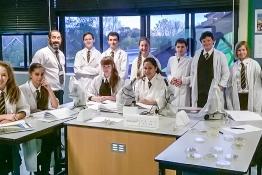Prions: protein rebels with a cause!
Issue 366 | Page 51 | Published Sep 2017
Description
Traditionally we consider infection to arise from viruses, bacteria and parasites. Prions are infectious proteins without any nucleic acids, and therefore do not represent living things. Despite this, they have the ability to replicate themselves and cause diseases such as mad cow disease (bovine spongiform encepthalopathy) and human Creutzfeldt Jakob disease (CJD). This article discusses how prions were first discovered and what has since been elucidated about their effects in various organisms. The mechanisms of protein misfolding in relation to prion biology are also examined.
More from this issue
There is much more to science education than the requirements demanded by the examination curriculum. This article illustrates one example of an...
Some impressions of the ASE Scotland Annual Conference 2017 from a teacher participant and exhibitor.
Matter can be described and explained in a number of ways, using models of increasing complexity depending on the intended audience. Under the...



